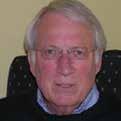Professor Jim Koropatnick – Paving The Way For The Future Through Innovative Training And Research

The history of the CaRTT and PEL
The PEL programme, along with its parent programme CaRTT, emerged from deliberate and progressive Canadian policies that have aimed to advance research training and education. As part of strengthening the health research community, the Canadian Institutes of Health Research (CIHR) developed the Strategic Training Initiatives in Health Research (STIHR) in 2002. This initiative seeks to support multidisciplinary research collaboration as well as to incorporate knowledge translation, ethical conduct, and professional skills in training programmes.
Under the leadership of Professor Jim Koropatnick, CaRTT (which originated as a STIHR program) strives to recruit and motivate profoundly qualified individuals to pursue superior training. Joined by Rodger Dusky, Professor Koropatnick also creates opportunities for high school students to participate in health research through the PEL programme.
Emergence of new curricula
In 2009, the National Sciences and Engineering Research Council of Canada (NSERC) established the Collaborative Research and Training Experience (CREATE) programme that initiates strategic training programmes (STPs) in STIHR-related areas such as cancer biology and mental health, and CREATE-related topics that include clean combustion engines. These promote multidisciplinary research opportunities, particularly at the interdisciplinary frontiers among natural sciences, engineering, medicine, social sciences, and humanities. The strategy is to achieve greater impact for trainees by combining the strengths of disciplines that are too-often traditionally separated. STPs are flexibly designed to accept and integrate new educational and innovative discoveries into the training curricula of universities. Some of the methods used to accomplish these goals include interactive online courses and workshops.
The approach to multidisciplinary research has evolved considerably as advocates call for the incorporation of new educational strategies. The traditional health sciences curriculum for graduate and postgraduate education requires the trainee to focus on a particular topic while under the guidance of an expert mentor. However, educators have updated and expanded the framework of this training model. For example, CaRTT trains students beyond one concentration area as it merges translational and multidisciplinary science. It also exposes the trainees to a diverse spectrum of career paths.
What does CaRTT provide?
As a newer paradigm, CaRTT at Western University offers training in a vast range of sciences for graduate students and postdoctoral fellows. The faculty consists of clinicians and scientists from all disciplines who study the methods of diagnosis, treatment, management, and prevention of cancer and other diseases.
The programme takes on 35 graduate students, postdoctoral Fellows, clinical residents and Fellows in translational cancer research each year. The programme director, Professor Koropatnick, describes its three main aims: ‘The purpose of CaRTT is to (a) add disease-based training to students’ university departmental training, which is primarily based on various disciplines (microbiology, immunology, physiology, pharmacology, biochemistry, etc.) rather than disease, (b) bring together clinical and basic researcher trainees from multiple disciplines to collaboratively pursue translational cancer research goals, focused on making a difference to the lives of cancer patients and not only the achievement of academic goals, and (c) train cancer researchers in the art and science of interacting with the private sector to support cancer research through the “valley of death” – the phase of biomedical research immediately following public sector funding of lab-based research in universities and research institutes and before major clinical trials of new ways to prevent, diagnose, and treat disease.’
One of the many ways that CaRTT is fulfilling these goals is by designing a ‘meet-andinteract’ platform that facilitates the sharing of information among laboratories, clinical settings, the private sector, and the community. This programme fosters an environment that unites trainees and mentors as they present their research together and learn about worldwide scientific discoveries. Furthermore, all trainees join a community of research scholars that are connected not only to those in similar areas of study but also to scientists in other fields.
The curriculum also includes remarkable events such as the Annual Cancer Research and Education Day, an Annual Retreat, and monthly seminars in Translational Cancer Research. Other components of the programme include required courses in the sciences and translational cancer research, which equip the trainees with a solid foundation of knowledge and the critical thinking skills to advance their research outcomes. The research programmes at Western University include the following: Translational Breast Cancer Research Unit, Translational Head and Neck Cancer Research Group, Translational Prostate Cancer Research Group, Translational Ovarian Cancer Research Group, Metastasis Translational Cancer Research Team, and Translational Gastrointestinal Cancer Research Team. All of these are associated with cutting edge investigations and collaborations.
The main departments at the Western University are the Cancer Research Laboratory Program, Cancer Research Laboratory Program, and Physics and Clinical Imaging. Furthermore, the university’s affiliation with the Schulich School of Medicine & Dentistry also contributes to a wide array of research opportunities in diabetes, Amyotrophic Lateral Sclerosis (ALS), rosacea, and other areas as well. The CaRTT programme is determined to nourish its trainees with a comprehensive depth of knowledge through several ways. As a key element of the programme, CaRTT has teamed with the Richard Ivey School of Business at Western University (ranked by Bloomberg Businessweek in 2014 and 2015 as the best international business school outside the United States and the top school in Canada) to present its students with a business course to develop their skill at teaming curiosity-driven, publicly-supported basic research with private sector-supported applied research – an essential step in allowing scientific discovery to achieve impact in reducing the burden of disease. Additionally, it stresses the building of professional skills in communication, grant writing, and peer review.
PEL: meeting the needs of higher education
Partners in Experiential Learning, or the PEL programme, was established in 2004 to encourage talented high-school students to pursue careers in science, technology, engineering, mathematics, and medicine (STEMM). ‘The purpose of the programme is to fuel the excitement of top-level students in pursuing a career, not only in cancer research specifically, but in a broad range of STEMM disciplines. In addition, the programme makes them knowledgeable about the set of skills they need to successfully pursue a STEMM career’ Professor Koropatnick explains. 60 students per year are recruited to the programme, who undertake mentor guided projects that cover STEMM topics as outlined by the Ontario curriculum. The students are involved in experimentation, data analysis and interpretation, grant writing, and even publication authorship.
The mission of the PEL programme serves to support students in their quest of discovery and knowledge translation in the STEMM subjects by pairing them with mentors. The students are encouraged to pursue academia and career paths that serve the benefit of Canadians. In this way the programme directly addresses the looming shortage of highly-qualified personnel in STEMM careers in Canada, and helps Canadian youth to reach their full potential. Additionally, it seeks to provide students with connections that they can maintain throughout their future and career training.
The PEL programme inspires its students to engage in conferences, seminars and research days. For example, CaRTT along with the Translational Breast Cancer Research Unit host a joint monthly Translational Seminar Series in which students are invited to attend lectures presented by world leading scientists. Furthermore, students participate in The Annual CaRTT and Department of Oncology Research and Education Day, and meet annually with winners of the Canada International Gairdner Awards (traditionally considered a precursor to winning a Nobel Prize in Medicine).
Designated STEMM institutions include the Lawson Health Research Institute, St. Joseph’s Health Care London, the London Health Sciences Centre, the Robarts Research Institute, and the London Health Sciences Centre.
‘A large number of students attending high schools in Canada have the motivation, energy, focus, and ability to become the next generation of leaders in science, technology, engineering, mathematics, and medicine’

How do these programmes impact the community?
Canada recognises that it needs more researchers in the STEMM disciplines and a greater number of PhD graduates who can contribute their expertise in non-academic settings. In fact, the Conference Board of Canada in 2014 reported that its country is lacking in productivity, growth, and innovation. Among the Organisation for Economic Co-operation and Development (OECD) countries, Canada ranks 21st. Hence, there is a sense of urgency to reduce these deficiencies.
While many complete undergraduate education in STEMM disciplines, unfortunately, a majority do not pursue further training or careers related to STEMM. The reason for these mediocre numbers is explained by the limited number of programmes dedicated to STEMM education and career cultivation especially during the early phases of training. Furthermore, bright young students are not receiving adequate exposure to STEMM career paths during high school, which is the crucial period when students decide what their future entails.
However, the PEL programme is very promising as Canadian high school students possess the enthusiasm, motivation, and capability to be the future of STEMM training. Moreover, this programme is one way to minimise the STEMM deficit. Since its launch in 2004, it has graduated almost 500 students. The vast majority of the early PEL scholars have gone on to pursue STEMM career paths.

Who are the mentors?
The researchers involved in mentoring and guiding students and trainees are engaged in a myriad of fundamental investigations ranging from cancer to physics to public health policy. They conduct research in molecular mechanisms and signalling pathways involved in breast cancer, prostate cancer, lung cancer and ovarian cancer, to name a few. Scientists also study the process of metastasis, which is described as the spread of cancer from the original organ to other sites. Other researchers explore mechanisms underlying resistance to cancer treatment, including enhanced cancer cell capacity to repair damage induced by anticancer drugs and radiation and to evade recognition by the immune system, and develop ways to overcome that resistance.
Pharmacology is another interest among particular scientists as some embark upon the design and preparation of new drugs in the treatment of cancer. Also, researchers assess various approaches in cancer therapy such as the use of novel vaccines in the prevention and treatment while others study the enhancement of current and new tumour drugs through gene manipulation. Further laboratories are working on inventing immunotherapeutic drugs for a broad spectrum of diseases as one laboratory, in particular, is eager to develop an antiinflammatory therapy for spinal cord injuries.
Scientists also study disorders that affect the head and neck, lungs, skin, and other organs. The specific interests include asthma, chronic obstructive pulmonary disease (COPD), type I diabetes mellitus, paediatric pancreatic disease, and organ transplantation. Other research areas concentrate on stem cells, developmental genetics, and even the role of hormones in growth and development of the foetus.
Radiation oncology techniques, nanotechnology and computer modelling of biological systems are all significant fields of research. For example, these studies have led to the invention of photoacoustic imaging – a technique used to detect breast cancer as well as many other diseases. Additionally, physicists are striving to develop new methods that optimise ultrasound, magnetic resonance (MR) and positron emission tomographic (PET) imaging. Others direct their efforts towards synthesising biodegradable polymers that are useful in tissue engineering, medical instruments and drug delivery.
A key goal of CaRTT and PEL is to train future researchers to exploit the ‘merge points’ of disciplines, where different ideas and perspectives meet to create productivity greater than is possible through any isolated discipline.
‘A frustratingly large number of talented, high ability trainees do not continue with postgraduate STEMM training and successful STEMM careers’
The future: educating a new generation
Alumni of both programmes may pursue careers in a diverse range of sectors such as academia, clinical settings or industry. Additionally, they may serve in government appointments to guide and form research policy.
There has been positive feedback from the students and mentors regarding CaRTT and PEL. Also, faculty mentors help with curricular planning as they provide resources and mentorship. CaRTT and PEL are highly committed to the enhancement of the educational and training experience as well as the personal growth of the participants.
The Canadian Academy of Health Sciences (CAHS) challenges academic institutions to promote and advance research for the sake of science, and the benefits provided to both government and industry. Students are encouraged to fulfil their maximum potential and to join the talent pool in the research community. Their future discoveries may lead to economic development and intellectual advancement for the greater good of the country.
Meet the researchers

Professor Jim Koropatnick
London Health Sciences Centre
London, Ontario, Canada
Professor Jim Koropatnick serves as the Director of the Canadian Institutes of Health Research Strategic Training Program in Cancer Research & Technology Transfer, Cancer Research Laboratory Program, the London Regional Cancer Program, and the London Health Sciences Centre. He is also a faculty member at the University of Western Ontario in the Department of Oncology. His research interests focus on the treatment of tumour cells and the identification of genes that lead to therapy resistance. Ultimately, his goal is to optimize treatment through gene manipulation. Professor Koropatnick’s laboratory recruits graduate students, research associates, visiting researchers, postdoctoral fellows and summer students.
CONTACT
T: (+1) 519 685 8654
W: www.lhsc.on.ca/Research_Training/LRCP/Research_Scientists/ JKoropatnick.htm

Rodger L. Dusky
Partners in Experiential Learning (PEL)
London, Ontario, Canada
Rodger Dusky is a retired chemistry, science, and Head of Cooperative Education who served in senior composite and academic secondary schools in Ontario. In 1995, he was awarded the National Prime Minister’s Award for Teaching Excellence in Science, Technology and Mathematics. With Professor Koropatnick, he created PEL in 2003 to match promising science co-operative students with mentors in the STEMM research community. He continues as Director of PEL, member of the CaRTT Program Advisory Committee, coordinator of the UWO Schulich School of Medicine and Dentistry Secondary School Gairdner Event, and member of the Ontario Provincial Partnership Council and its Strategic Task Force Committee.
CONTACT
T: (+1) 519 434 2349
W: http://www.schulich.uwo.ca/cartt/education/partners_in_ experiential_learning
FUNDING
Canadian Institutes of Health Research (CIHR)
Ontario Centres of Excellence (OCE)
Ontario Research Fund – Research Excellence (ORF-RE)
Ministry of Education, Student Success Policy Branch, Province of Ontario, Canada
REFERENCES
CBE Life Sci Educ. 2016 Spring;15(1):le1.
From Solo in the Silo to Strategic Training Programs.
Koritzinsky M, Koch CA, Riley B, Beauchemin N, Johnston G, Johnston M, Koropatnick J, Loiselle CG, Maslowska M, McCormick C, Miller WH Jr, Mulligan L, Tsao MS.


